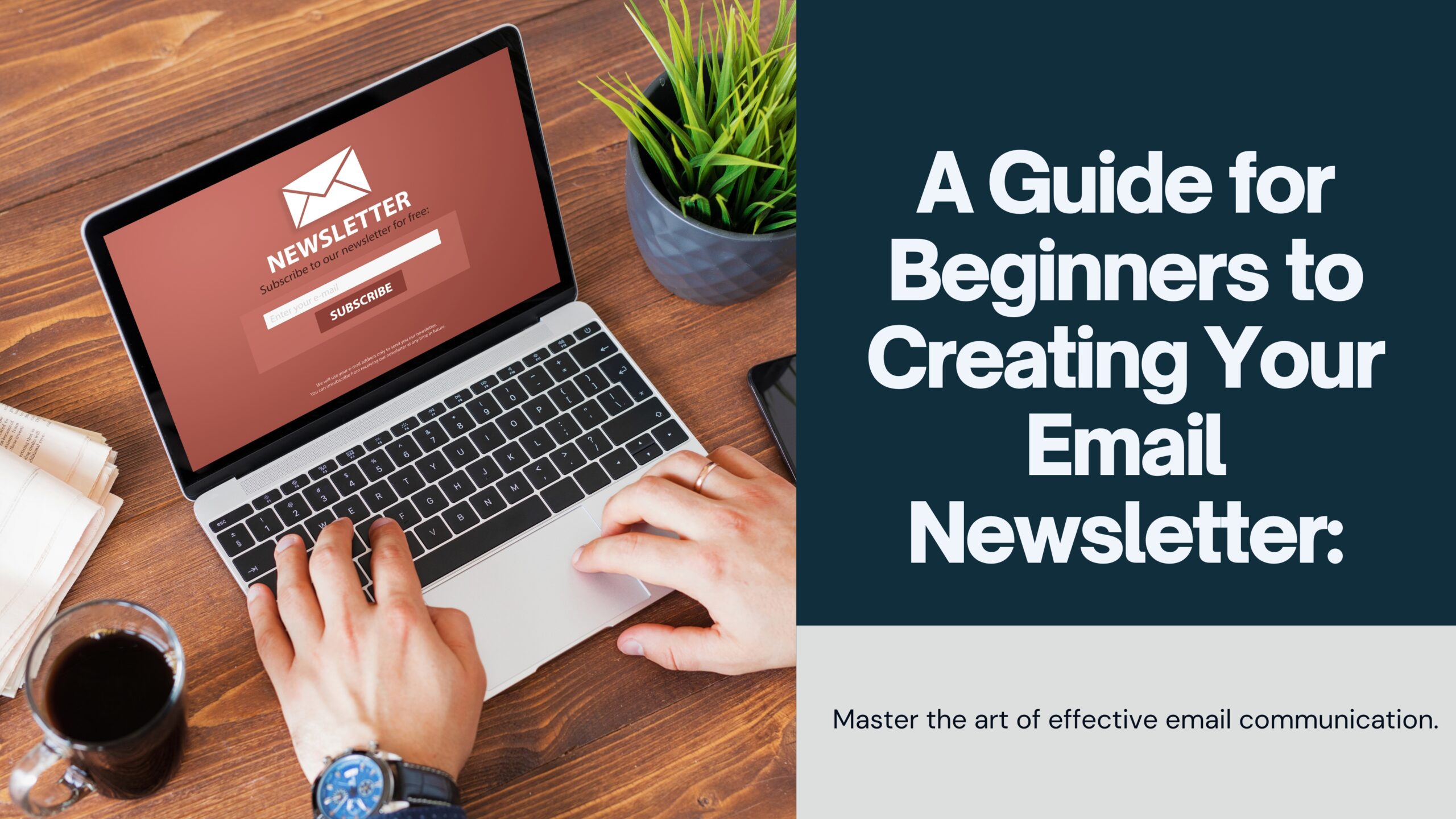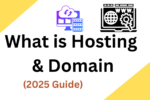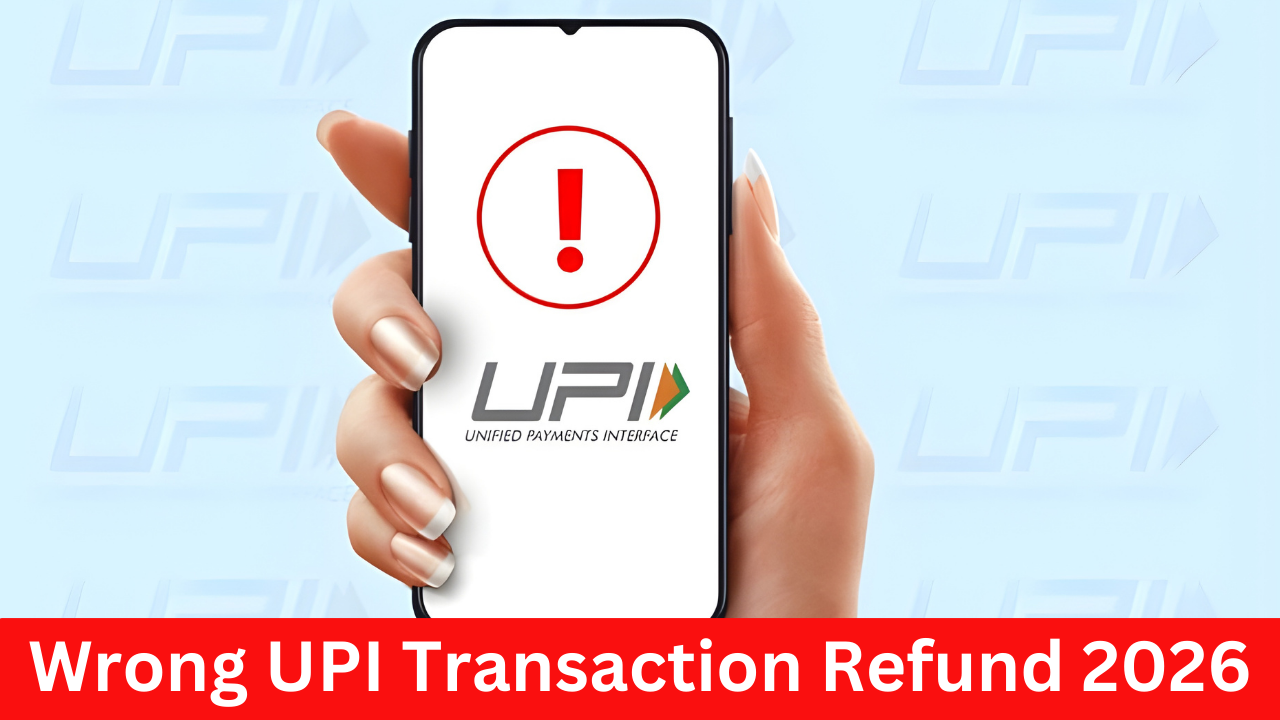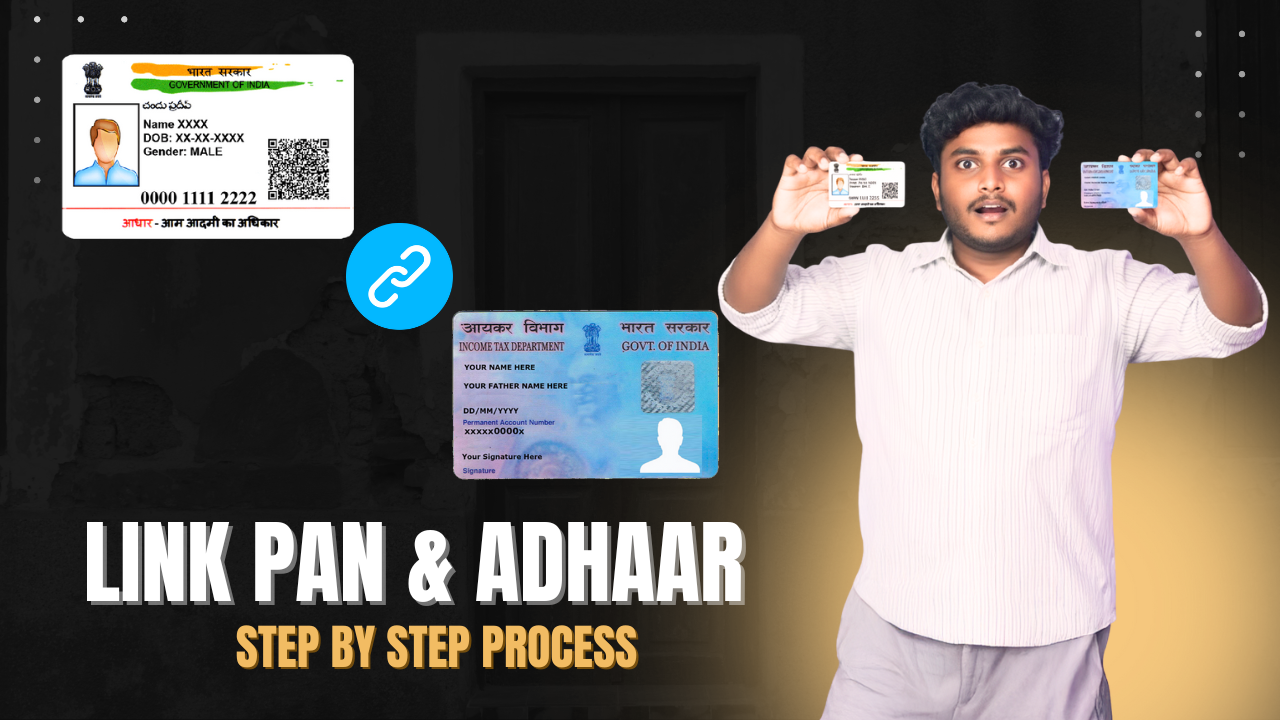Table of Contents
ToggleA Step-by-Step Guide to Creating an Effective Email Newsletter
How to Create an Email Newsletter, Email newsletters aren’t just a passing fad; they’re a potent means of engaging with your prospects and online community. If you haven’t embraced them yet, you’re overlooking a valuable opportunity to connect.
What exactly is an email newsletter? Do you need one for your business? Can you see examples of successful implementations? How do you write and distribute one effectively? If these questions have been on your mind, you’re in the right place.
Stop wasting time searching and start reading. This guide will take you through the process of creating and distributing newsletters to captivate your subscribers.
With experience leading marketing teams at tech startups, I’ve witnessed firsthand the impact of email newsletters. Moreover, industry experts suggest a remarkable return on investment, with some estimating $40 for every dollar spent. According to a recent HubSpot survey, nearly 9 out of 10 marketers intend to maintain or boost their investment in email marketing in 2024. So, how can you craft your own email newsletter?
In this article, I’ve compiled a comprehensive checklist to kickstart your newsletter strategy. Drawing on my personal insights, expert advice, and the latest data, you’ll discover everything you need to craft, refine, and distribute your email newsletter effectively.
A Overview for Email Newsletters
An email newsletter serves as a digital communication tool utilized by businesses or individuals to connect with a subscriber base. This list typically comprises existing or potential customers who have willingly opted in to receive marketing communications. Regularly dispatched, these newsletters are rich in content, offering valuable resources such as guides, blog posts, news updates, product reviews, recommendations, and announcements.
Integral to any email marketing strategy, newsletters enable businesses to cultivate relationships with their audience, positioning themselves as industry authorities while driving traffic to their websites.
In essence, an email newsletter functions as a conduit for disseminating news, insights, and updates about products, businesses, or non-profits. To receive these updates, individuals must join an email list by providing their email addresses, becoming subscribers, leads, or contacts.
Businesses utilize newsletters to furnish users with product information, unveil new arrivals, and deliver the latest updates. Similarly, websites and blogs leverage newsletters to share content updates, bolster traffic, and foster a dedicated following.
At its core, an email newsletter serves as a platform for sharing various types of content, including company news, industry updates, product/service enhancements, sales promotions, content round-ups, educational insights, and new arrivals. Sent out periodically—whether daily, weekly, bi-weekly, or monthly—newsletters are a fundamental component of an effective email marketing strategy.
Upon subscribing, individuals become part of your subscriber base, referred to as either prospects (interested but non-paying) or customers (paying). It’s imperative to include an unsubscribe link in newsletters, allowing subscribers to opt out at any time.
Ultimately, the primary objective of an email newsletter is to engage and inform subscribers about your business, enticing them to explore your products or services.
Advantages of Email Newsletters
In today’s customer-centric landscape, regular communication is paramount to fostering satisfaction, and email newsletters serve as a pivotal tool for interaction.
A staggering 81% of B2B marketers leverage email newsletters to disseminate content, enabling proactive outreach, fostering brand recognition, and maintaining a presence in the minds of potential customers.
Furthermore, maintaining an active newsletter cultivates authority within your niche. By sharing insightful and valuable information, you instill trust in your audience, positioning yourself as a reliable source of expertise.
But the benefits don’t end there. Here are nine compelling reasons to embrace newsletters:
- Excellent Source of Traffic: Periodic newsletters with internal links drive traffic to your website, blog, or landing pages.
- Owned Media: Unlike platforms subject to algorithmic whims, newsletters offer a direct line to your audience, free from the constraints of fluctuating organic reach or algorithm updates.
- Increased Sales: Consistently adding value through newsletters nurtures customer relationships, resulting in increased sales as subscribers remember your brand when making purchasing decisions.
- Increased Engagement: By providing relevant information and updates, newsletters keep subscribers engaged with your brand.
- Enhanced Customer Delight: Regularly sharing pertinent content strengthens your relationship with customers, enhancing overall satisfaction.
- Brand Authority & Deep Loyalty: Maintaining top-of-mind presence fosters strong brand associations and cultivates deep loyalty among subscribers.
- Improved Brand Thought Leadership & Readership: Newsletters bolster your authority and credibility, positioning your brand as a thought leader within your industry.
- Easy to Implement, Low-Cost Operation: Compared to costly paid ads or unpredictable influencer marketing, newsletters offer a cost-effective solution with significant ROI potential.
- Easy to Track Metrics: Simplified tracking of key parameters such as open and click rates enables accurate ROI calculation and facilitates continuous improvement in email marketing effectiveness.
In summary, email newsletters are a versatile and powerful tool for businesses seeking to enhance customer engagement, nurture leads, and drive sales while maintaining control over their messaging and costs.
Power of Email Newsletters
Did you realize that over 75% of today’s website visitors won’t return? It’s not your fault; the internet is vast, and competition for attention is fierce.
However, launching an email newsletter presents an opportunity to convert those fleeting visitors into loyal subscribers. Once they’re part of your newsletter community, you can maintain regular contact and entice them back to your website.
Essentially, without an email newsletter, you’re missing out on potential subscribers and customers daily.
You might argue that users can simply follow you on social media for updates. While that’s true and building a social media presence is crucial, it’s essential to recognize that you don’t own those platforms.
Social media giants like Facebook and Twitter control your audience’s reach, and many users might not check their feeds frequently. In contrast, email inboxes are checked by 99% of people daily, often multiple times, especially with mobile devices and email notifications.
In essence, starting an email newsletter provides a direct and reliable channel to engage with your audience, ensuring your message reaches them where they are most attentive: their inbox.
Why They Should Be Your Top Choice
Ever pondered why email newsletters should be your top choice? Picture having a secret passage that leads directly into your audience’s inbox, sidestepping the digital clamor and commotion. That’s precisely what email newsletters offer: your exclusive ticket to not just outreach but genuine connection.
So, what’s the allure? Let’s dissect it, shall we?
- Reliable Traffic Source: Email newsletters serve as your steadfast conduit for inbound traffic. Unlike the uncertainty of social media, where your message might get lost in the shuffle, newsletters ensure direct access to your audience’s inbox, efficiently driving visitors to your website.
- Targeted Reach: Speak directly to those eager to hear from you, akin to hosting a VIP gathering in the digital realm.
- Consistent Engagement: Sustain the dialogue and captivate prospects with tailored information.
- Higher Conversion Rates: Email newsletters boast 40 times more customer acquisition compared to Meta & X.com combined, making them a potent tool for businesses.
- Cost-Effectiveness: With minimal investment, email newsletters yield significant returns, making them the thrift shop of marketing strategies.
- Low Overhead Costs: Bid farewell to extravagant ad spends; email campaigns can be executed without setup or overhead expenses.
- High ROI: Email marketing delivers superior returns, with statistics showcasing its financial prowess.
- Efficient & Time-Saving Email Automation: Harness the power of automation to streamline your email newsletter campaigns effortlessly.
- Automated Campaigns: Set your emails on autopilot, ensuring consistent engagement with minimal effort.
- Personalization at Scale: Tailor your communications to each recipient, fostering a sense of individualized attention.
- Scheduled Sending: Plan and dispatch emails at optimal times, ensuring maximum impact.
- Advanced Performance Tracking: Email newsletter platforms offer robust analytics tools, empowering you to monitor and optimize campaign performance in real-time.
- In-Depth Analytics: Gain insights into audience preferences and behavior, informing future campaign strategies.
- Subscriber Insights: Understand your audience’s interests, segment your list accordingly, and personalize content for enhanced engagement.
- Seamless Integration with Other Online Channels: Email newsletters seamlessly complement your existing marketing efforts, facilitating cohesive omnichannel engagement.
- Social Media Integration: Drive traffic from social platforms to your newsletter, maintaining ownership of your audience.
- Content Distribution: Connect your newsletter with your website or blog, disseminating your latest updates, offerings, and insights to subscribers.
In essence, email newsletters are the Swiss Army knife of marketing strategies—versatile, efficient, and indispensable for audience engagement. So, why wait? Start crafting your inaugural newsletter today!
Creating an Effective Email Newsletter Campaign
Interested in launching an email newsletter campaign that captures attention and drives results? Crafting a memorable newsletter requires both creativity and strategy. Here’s a straightforward guide to assist you at every stage of building an email newsletter for your brand:
- Establish Your Goals & Objectives:
- Define the purpose of your newsletter. Is it to enhance brand visibility, increase sales, or keep your community informed?
- Set measurable targets such as open rates, click-through rates, or conversion rates to gauge success.
- Ensure your newsletter goals align with your broader marketing and growth strategy.
- Find the Right Email Marketing Software:
- Prioritize essential features like automation, detailed analytics, and customizable templates.
- Opt for a user-friendly platform that streamlines your email marketing efforts and supports future growth.
- Select software that seamlessly integrates with your existing tools and systems.
- Define Your Target Audience & Subscriber List:
- Utilize analytics tools or social media insights to understand your audience’s interests and preferences.
- Tailor your newsletter content to resonate with your target audience’s needs and preferences.
- Build Subscriber List via Signup Forms:
- Embed signup forms on your website strategically to convert visitors into subscribers.
- Offer incentives such as exclusive content or discounts to motivate sign-ups.
- Clearly communicate the benefits of subscribing to encourage more registrations.
- Remember List Management:
- Regularly clean your subscriber list by removing inactive or disengaged contacts.
- Segment your subscribers based on interests, behaviors, or demographics to deliver personalized content.
- Ensure compliance with email marketing regulations such as GDPR to maintain trust and transparency.
- Focus on Email Newsletter Design:
- Choose responsive email templates that adapt seamlessly to different devices for optimal readability.
- Incorporate your brand’s design elements such as colors, fonts, and logo to maintain brand consistency.
- Adopt a minimalist design approach with plenty of white space to enhance readability and visual appeal.
By following these steps, you can create an email newsletter campaign that not only grabs attention but also drives engagement and delivers tangible results for your brand.
Importance of Email Newsletters: Advantages and Considerations
Email newsletters stand out as one of the most effective means to engage existing and potential clients, primarily due to their low-cost nature and remarkable return on investment (ROI). With an average ROI of $35 for every $1 spent, email marketing ranks among the top-performing channels for businesses of all sizes. Additionally, 76% of customers prefer email communication pre-purchase, underscoring the significance of this marketing avenue.
However, before diving into the world of email newsletters, it’s essential to weigh the advantages and drawbacks associated with them. Let’s explore both sides of the coin:
Pros:
- Constant Source of Traffic: Newsletters serve as a reliable source of regular website traffic, outperforming other marketing channels such as social media and banner advertising.
- Cost-Efficient: Compared to paid advertisements and other marketing tools, email newsletters offer significant cost savings, making them a preferred choice for budget-conscious marketers.
- Advanced Performance Tracking: Email marketing platforms provide comprehensive analytics, allowing marketers to track metrics such as open rates, click-through rates, and engagement levels accurately.
- Independence from Third Parties: Creating newsletters grants marketers independence from third-party platforms and software, minimizing the risk of cost increases and external disruptions.
- Integration with Other Channels: Email newsletters seamlessly integrate with various online marketing channels, facilitating cohesive omnichannel strategies and maximizing audience reach.
- Email Automation: Automation features streamline the process of creating and sending newsletters, ensuring consistent communication and timely delivery of content.
Cons:
- Absence of Physical Experience: Unlike analog advertising media, email newsletters lack a tangible, haptic experience, potentially limiting their lifespan and impact.
- Ease of Deletion: Emails are often quickly deleted or skimmed through, leading to lower engagement rates compared to physical media. Despite optimization efforts, achieving a 100% engagement rate remains elusive.
In summary, while email newsletters offer numerous benefits such as cost-effectiveness, targeted reach, and ease of performance tracking, they also come with limitations such as the absence of physical experience and the risk of deletion. By carefully weighing these pros and cons, businesses can make informed decisions about integrating email newsletters into their marketing strategies effectively.
Also Read How to Log In to WordPress Using the Login URL
A Step-by-Step Guide to Creating a Email Newsletter
Creating an impactful email newsletter requires attention to detail and strategic planning. From choosing the right tools to crafting compelling content, each step plays a crucial role in the success of your campaign. Here’s a comprehensive guide to help you navigate the process effectively:
Step 1: Select an Email Newsletter Tool
Begin by choosing an email marketing platform that aligns with your budget, objectives, and technical expertise. Platforms like HubSpot offer intuitive tools for designing and sending optimized newsletters, making them a popular choice for businesses of all sizes.
Step 2: Define Your Newsletter’s Objectives
Before diving into content creation, clearly outline your newsletter’s goals and how they align with your broader marketing strategy. Whether it’s driving website traffic, generating leads, or promoting products/services, establishing clear objectives will guide your content decisions.
Step 3: Choose a Template and Gather Content
Select a visually appealing template that complements your brand identity and resonates with your audience. Next, gather relevant content that aligns with your newsletter’s goals, whether it’s blog posts, product updates, or industry insights.
Step 4: Personalize Your Template
Customize your chosen template to reflect your brand’s personality and engage your audience effectively. Utilize personalization features to greet recipients by name and tailor content based on their interests and preferences.
Step 5: Set Email Newsletter Size
Optimize your newsletter’s dimensions to ensure it displays correctly across various devices and email clients. Aim for a standard width of 600 pixels and consider the length to ensure it remains engaging without overwhelming recipients.
Step 6: Craft Compelling Body Content
Write concise, engaging copy that delivers value to your subscribers and encourages them to take action. Incorporate imagery, CTAs, and interactive elements to enhance readability and drive engagement.
Step 7: Add Personalization Tokens and Intelligent Content
Segment your audience and personalize content based on their preferences and behaviors. Leverage personalization tokens and smart content to create tailored experiences that resonate with each recipient.
Step 8: Choose Subject Lines and Sender Name
Craft attention-grabbing subject lines that entice recipients to open your email. Consider using personalization and actionable language to increase open rates. Additionally, ensure your sender name is easily recognizable and trustworthy.
Step 9: Support Content with Alt Text and Plain Text
Include alt text for images and provide a plain text version of your newsletter to improve accessibility and deliverability. Ensure all recipients can access your content, regardless of their email client or device.
Step 10: Ensure Legal Compliance
Adhere to relevant email marketing laws and regulations, such as CAN-SPAM and GDPR, to maintain compliance and protect your brand reputation. Include unsubscribe links and accurate sender information to meet legal requirements.
Step 11: Test Across Browsers and Email Providers
Test your newsletter across different browsers and email providers to ensure optimal rendering and functionality. Address any formatting issues or compatibility issues to deliver a seamless experience to your subscribers.
Step 12: Send Your Email
Once you’ve reviewed and finalized your newsletter, it’s time to hit send. Ensure all recipients have opted in to receive your emails and track performance metrics to measure success.
Step 13: Analyze and Iterate
Monitor key performance indicators (KPIs) such as open rates, click-through rates, and conversion rates to evaluate your newsletter’s effectiveness. Use data-driven insights to refine your approach and continually improve future campaigns.
By following these steps and incorporating best practices, you can create a compelling email newsletter that engages your audience, drives results, and strengthens your brand presence.
Why Everyone Should Start an Email Newsletter
If you’re wondering whether starting an email newsletter is worth your time and effort, the answer is a resounding yes. Regardless of your industry, business size, or website traffic, creating an email newsletter offers numerous benefits and opportunities for growth. Here’s why:
- Small Businesses: An email newsletter is a cost-effective way for small businesses to connect with their existing customers, website visitors, and potential clients. By regularly communicating with your audience via email, you can build relationships, drive sales, and foster customer loyalty.
- eCommerce Websites: Email marketing is a powerful tool for eCommerce websites, with research showing that promotional emails influence purchasing decisions for over 44% of recipients. By sending targeted emails, such as abandoned cart reminders, you can recover lost sales and increase revenue.
- Non-Profits: Non-profit organizations rely on donations, support, and event attendance from their supporters. Email newsletters provide a cost-effective means of reaching out to donors, volunteers, and the general public. Plus, supporters are more likely to engage with emails from organizations they care about.
- Blogs and News Websites: For content-driven websites like blogs and news sites, email marketing is essential for building and engaging an audience. By capturing email addresses from your readers, you can deliver valuable content directly to their inboxes, increasing website traffic and reader loyalty.
- Education: Educational institutions can benefit from email newsletters for fundraising, admissions, event promotion, and community engagement. By keeping students, faculty, parents, and local businesses informed via email, schools and colleges can strengthen their relationships and support network.
These examples highlight the versatility and effectiveness of email newsletters across various industries and purposes. Whether you’re a business owner, blogger, non-profit leader, or educator, starting an email newsletter can help you achieve your goals and connect with your audience in a meaningful way.
Now that you understand the importance of email marketing, let’s explore how you can easily set up and launch your own email newsletter to grow your brand and business.
FAQ’s for How to Create an Email Newsletter
Why should I start an email newsletter for my small business?
Answer: Starting an email newsletter for your small business is a cost-effective way to stay in touch with your existing customers, engage with website visitors, and attract potential clients. It allows you to build relationships, drive sales, and foster customer loyalty over time.
Can email newsletters really help eCommerce websites increase sales?
Answer: Yes, email newsletters are highly effective for eCommerce websites. Research shows that over 44% of email recipients have made a purchase as a result of receiving a promotional email. By sending targeted emails, such as abandoned cart reminders, eCommerce sites can recover lost sales and boost revenue.
How can non-profit organizations benefit from email newsletters?
Answer: Non-profit organizations can leverage email newsletters to reach out to their supporters for donations, volunteer recruitment, event promotion, and more. Email marketing provides a cost-effective way to engage with donors, volunteers, and the general public, ultimately helping non-profits fulfill their missions.
Why are email newsletters essential for blogs and news websites?
Answer: Email newsletters are crucial for blogs and news websites because they allow publishers to build and engage with their audience directly. By capturing email addresses from readers, blogs and news sites can deliver valuable content straight to their inboxes, driving website traffic and reader loyalty.
How can educational institutions benefit from email newsletters?
Answer: Educational institutions, such as schools and colleges, can use email newsletters for fundraising, admissions outreach, event promotion, and community engagement. Email marketing offers a cost-effective way to communicate with students, parents, faculty, and local businesses, strengthening relationships and support networks within the education community.








1 thought on “How to Create an Email Newsletter in Easy Steps (Completely Free) 2024”